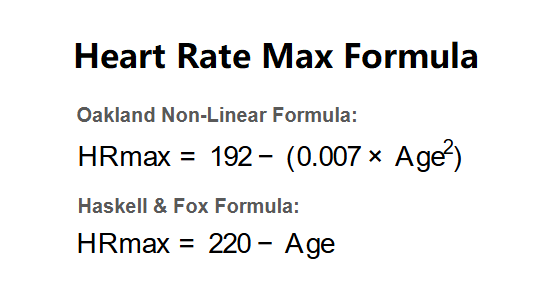 Home
Home
 Back
Back

Definition: This calculator estimates your maximum heart rate (HRmax) based on your age, using either the Oakland non-linear formula or the Haskell & Fox formula.
Purpose: It helps individuals determine their maximum heart rate, which is useful for setting training zones, monitoring exercise intensity, and assessing cardiovascular fitness.
The calculator uses one of two formulas based on user selection:
Oakland Non-Linear Formula:
Haskell & Fox Formula:
Steps:
These calculations are crucial for:
Example 1: A 30-year-old using the Oakland Non-Linear formula:
Example 2: A 25-year-old using the Haskell & Fox formula:
Q: Why are there different formulas for HRmax?
A: Different formulas account for variations in accuracy across populations. The Oakland Non-Linear formula adjusts for age more precisely, while Haskell & Fox is simpler but less accurate for some individuals.
Q: How accurate are these calculations?
A: They provide estimates, but actual HRmax varies due to factors like genetics, fitness level, and sex. A lab test is the most accurate method.
Q: Can I use HRmax for training?
A: Yes, HRmax is used to set heart rate zones (e.g., 60-70% of HRmax for moderate intensity), helping you train effectively and safely.